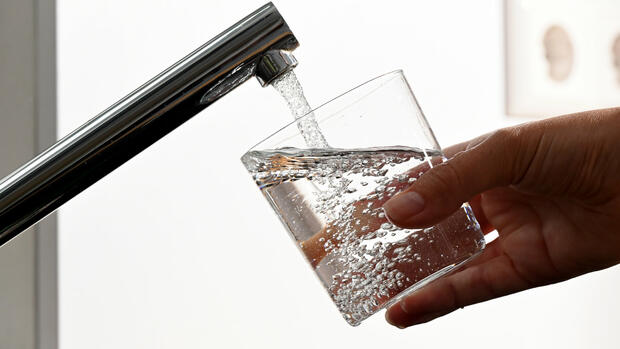Water supply is also becoming an increasingly important issue in Germany.
(Photo: dpa)
Munich In times of climate change, water scarcity is becoming an ever greater threat. “Water will become as important as CO2 is now,” says Anja Eimer, who heads the global water management business at Siemens.
In Germany, people haven’t thought about it for a long time – after all, the water comes reliably from the tap. But now there was also a threat of longer drought phases in Europe, and the topic had reached society’s awareness. This is also shown by the national water strategy that the federal government has announced.
1. The problem: Too much drinking water is lost through leaks
In some regions of the world, up to 70 percent of the treated drinking water is lost. Even in industrialized nations with a more modern infrastructure, significant quantities are at stake. For example, the Swedish water company VA Syd, which supplies drinking water to more than half a million people in southern Sweden, found that it was losing around ten percent of its water through leaks when it tackled the issue.
Larger leaks are found relatively quickly in the more than 5,000-kilometer-long pipeline network. It is more difficult if not impossible with the smaller holes, from which water slowly escapes. Digging up the ground and looking for the leak is often not an option.
2. The solution: AI identifies anomalies
“We want to make the existing infrastructure more intelligent,” says Siemens manager Eimer. For this purpose, an artificial intelligence (AI) is trained with flow rates and pressure data from the past. The cloud-based application Siwa Leak Plus then monitors the data in everyday operation and can automatically detect anomalies, identify the location of the leak and state the most likely cause.
Now you can find smaller leaks that lose half a liter of water per second, says Victor Pelin, development engineer at Va Syd. According to Siemens, water losses can be reduced by 50 percent.
>> Read here: Drought and its consequences: These graphics document the struggle for water
The economic aspects are also taken into account, says Siemens manager Eimer: “The system gives a recommendation as to when it is worth repairing the leak.”

This text is part of the large Handelsblatt special on artificial intelligence. Are you interested in this topic? All texts that have already appeared as part of our theme week
You will find here.
The Siwa Blockade Predictor, in turn, is designed to predict pipe blockages to improve the performance of the sewer network. An example: The British utility Yorkshire Water operates 55,000 kilometers of sewers. One problem so far has been that when it rains too much water overflows because the pipes are blocked.
With the help of AI, the company now wants to reduce the number of incidents by half by 2025. The software should announce impending blockages up to two weeks in advance. “This allows our team to intervene before harmful effluent is released,” says Yorkshire Water Manager Heather Sheffield.
3. Outlook: The economic potential is considered to be great
Due to the climate crisis, the topic will continue to gain in importance in the coming years. The USA alone wants to invest 55 billion dollars in the renovation of the water infrastructure. Modernization also plays a central role in the German water strategy with its 78 individual measures up to 2030.
The industry has correspondingly high hopes. “The topic has a high priority for Siemens,” says Eimer. Customer demand is already very high.
Siemens is also convinced that the findings from water management can also be used in other fields, such as oil pipelines and industry. “There are no limits to your imagination,” says Eimer. AI is already being used for irrigation in agriculture.
More: Technology, suppliers, advice – How to invest in the future issue of water scarcity

